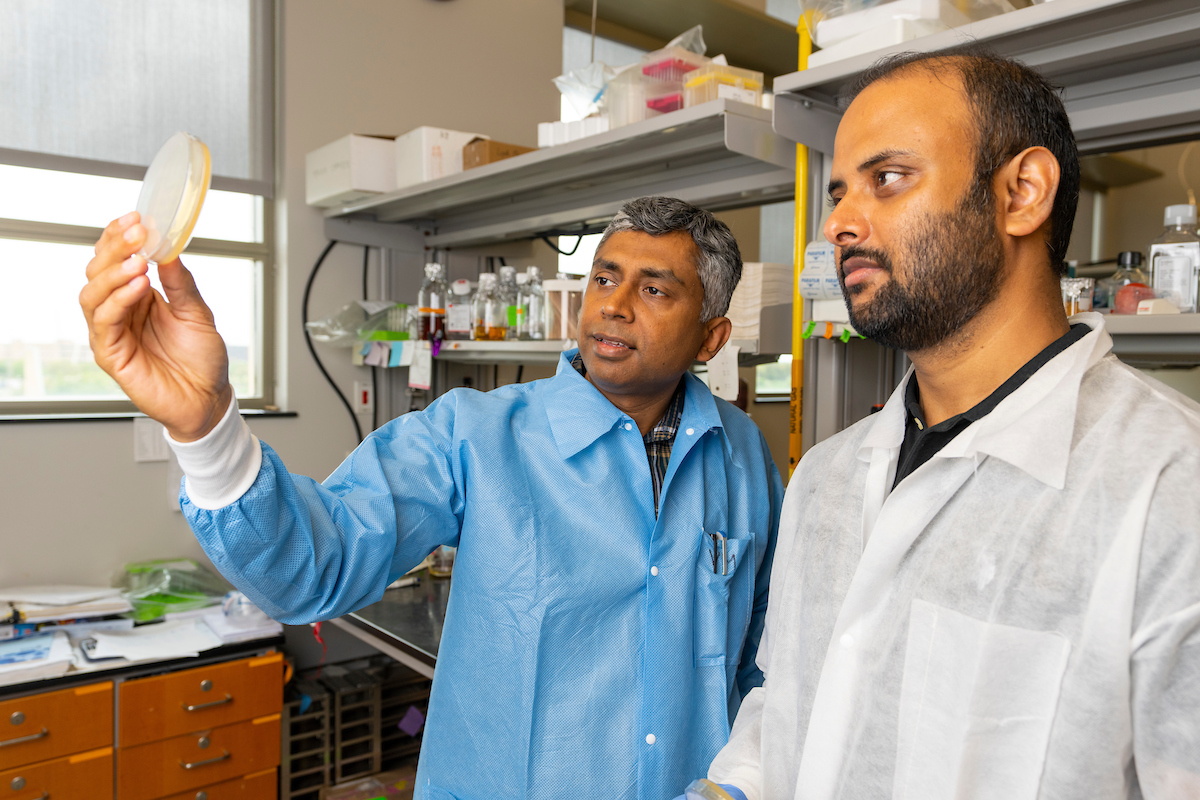Getting the right signals
Researchers: Some dietary bioactives can help ‘normalize’ cancer-producing cell signals
COLLEGE STATION – Researchers in Texas A&M University’s College of Agriculture and Life Sciences have proposed a “unified” way to explain the function of dietary bioactives in suppressing cancer-causing cell signaling.
“Dietary bioactives are constituents in foods or dietary supplements — other than those needed to meet basic human nutritional needs — which are responsible for changes in health status,” explained Dr. Robert Chapkin, a distinguished professor in the college’s nutrition and food science department.
Chapkin is also the deputy director of the Center for Translational Environmental Health Research at Texas A&M. His research focuses on colon cancer prevention. He and collaborating researchers examine the effects of nutrients on the inhibition or activation of genes involved in cancer development in humans.

“In a series of exciting discoveries, Robert Fuentes, Tim Hou, Harmony Turk and Jeannie Allen, all graduate students in my lab, have demonstrated that long-chain omega-3 fatty acids found in fish oil, as well as curcumin, found in turmeric, are in a unique class of dietary bioactives that we have termed membrane-targeted dietary bioactives, or MTDBs.”
Chapkin said previous studies suggest that dietary bioactives such as curcumin, as well as fish oil and omega-3 fatty acids, are effective as colorectal cancer preventive agents.
“But one criticism of dietary chemoprevention is the fact that these dietary bioactives appear to influence other seemingly unrelated traits within diverse physiological processes,” he said. “These include influencing cell membrane structure and function, lipid metabolism, nuclear receptor activation and inflammatory responses.”
Chapkin said researchers in his lab have made strides in explaining and “unifying” the apparently disconnected signaling nodes of these dietary bioactives.
He said their findings show that long-chain fatty acids found in fish oil, as well as curcumin and capsaicin, which is found in hot peppers, fall into this unique class because they have both hydrophilic, or water-loving, properties and lipophilic, or fat-loving, properties. Due to their characteristics, these MTDBs are capable of disturbing cell membrane organization.
“While these dietary bioactives, like most diet or supplement constituents, have multiple physiological targets, perhaps the most significant and overlooked is their ability to modulate signaling processes by disrupting the organization of the cell membrane,” said Robert Fuentes, a Ph.D candidate and one of the researchers. “For example, omega-3 fatty acids, found in fish oil, actually get incorporated into phospholipids that form the cell plasma membrane. While other MTDBs, such as curcumin and capsaicin, squeeze in between spaces within the membrane leading to disruption of lipid and protein interactions.”

He said recent findings from work done in the Chapkin lab demonstrate that MTDBs accumulate in the colon and disrupt the membrane structure and composition of its epithelial cells. This helps suppress the dysfunctional Ras signaling that can lead to colon cancer.
Ras is a family of related proteins that helps transmit signals within cells. When activated by incoming signals, Ras proteins then activate other proteins, which ultimately switch on genes involved in cell growth and differentiation. Ras gene mutations can permanently switch on Ras production, causing overactive cell signaling that can ultimately lead to cancer.
“Tumors and cancer result from runaway cell growth from overactive signaling, and finding a way to attenuate or ‘normalize’ these signals caused by Ras gene mutations is an important aspect of cancer suppression,” Fuentes said.
Approximately 30-50 percent of colorectal cancers contain Ras mutations, which confer resistance to standard therapy and have therefore been termed “undruggable.” About 90 percent of pancreatic cancers, one of the most aggressive types of cancer, contain Ras mutations.
Chapkin said high-fidelity signaling of Ras is dependent on its spatial organization into defined nanoclusters — groups of microscopic particles with dimensions of less than 100 nanometres or about 1,000 times smaller than the diameter of a human hair — on the plasma membrane.
“The research recently done in the lab has demonstrated that certain MTDBs, through direct modulation of the plasma membrane, alter cancer-causing Ras nanoclustering and help normalize cell signaling,” Chapkin said. “These recent findings suggest that Ras nanoclusters could represent a novel target for future interventions in addressing colon cancer and possibly other cancers.”





